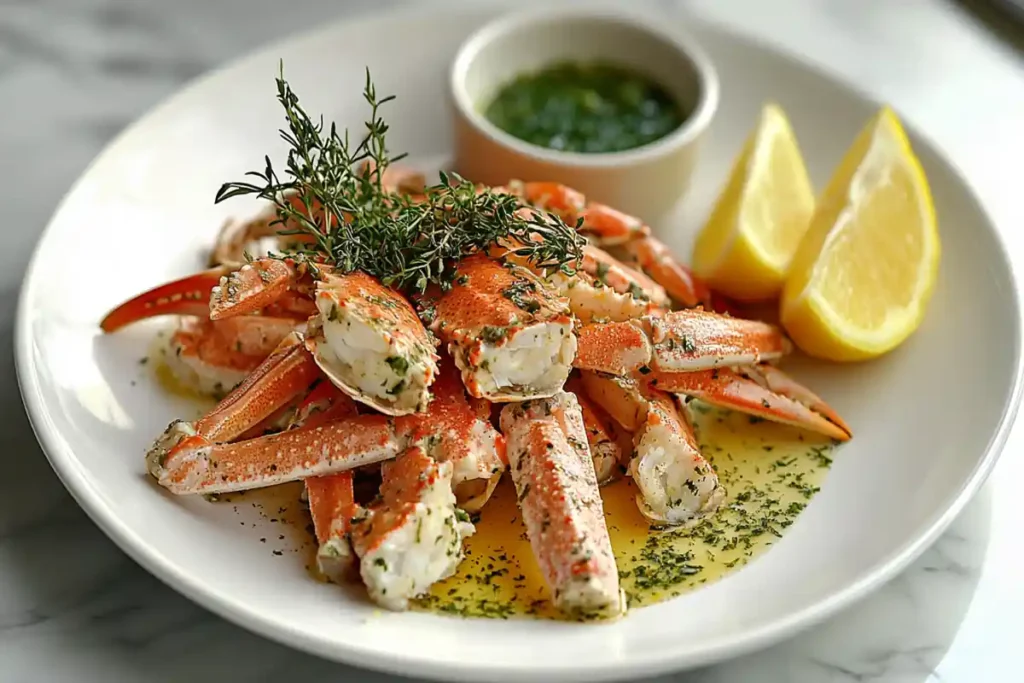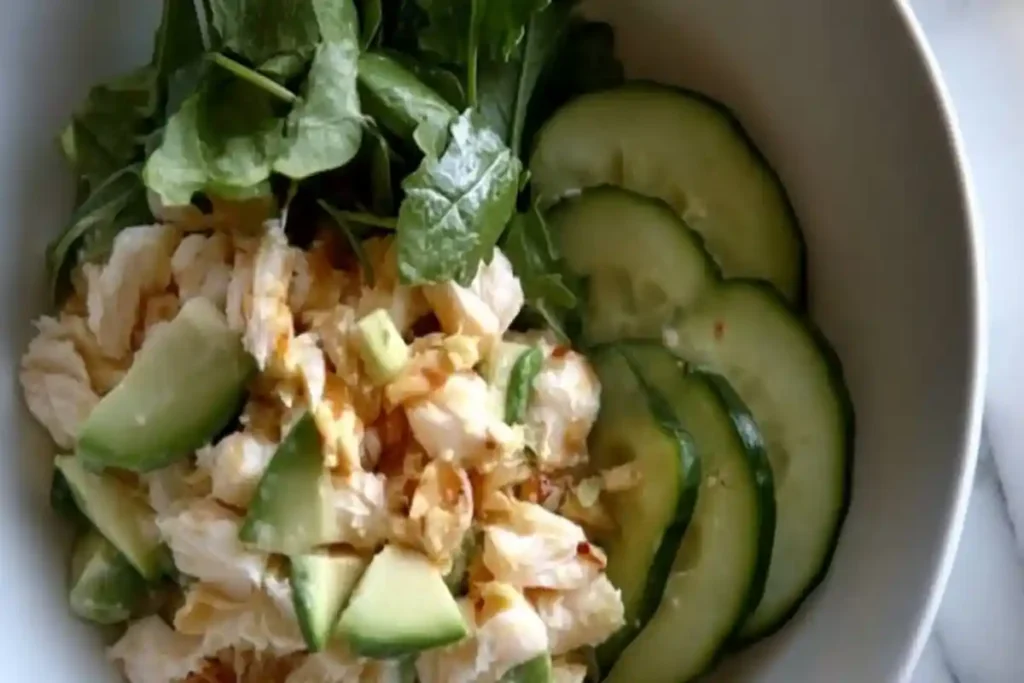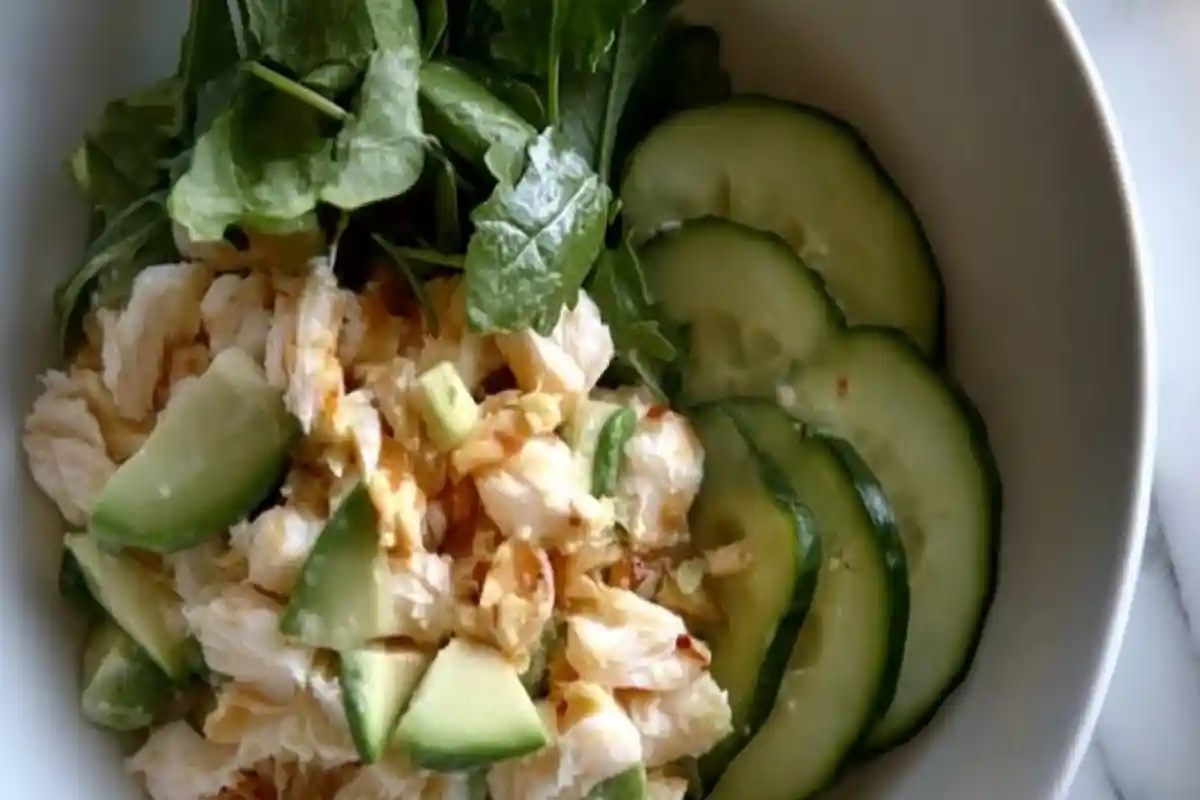Alright, let’s be honest—crab isn’t exactly your everyday protein. It’s one of those foods people treat like a little luxury. But lately, I’ve been hearing more folks ask me, “Hey, is crab even healthy?” And yeah, I get it. Between diet trends, heart health concerns, and just trying to eat better in general, knowing what’s worth putting on your plate matters.
So I decided to break it all down—no fluff, just the real stuff. This post isn’t just about saying yes or no to crab. It’s about understanding why it’s good (or when to take it easy), and how to enjoy it without wrecking your health goals. And trust me, as someone who grew up eating crab every summer at family cookouts, I’ve got a few stories and tips to sprinkle in too.
You’ll find everything in here—from what crab meat is really made of to whether it fits in your diet plan. Plus, we’re covering the different types of crab (because not all crab is created equal), the legit benefits, the stuff you should watch out for, and how to keep your crab dishes healthy without sacrificing that flavor we all love.
Why Everyone’s Suddenly Asking: “Is Crab Healthy?”
You ever notice how crab went from being a once-a-year fancy dinner thing to showing up in salads, sushi, and even those little meal-prep bowls people post all over Instagram? I’m telling you, crab has made a serious comeback—and it’s not just because it tastes good.
Lately, folks are way more tuned into what they’re eating. Clean eating, high-protein diets, cutting back on processed stuff—it’s all part of this bigger shift. And seafood? Well, it’s kind of become the poster child for “healthy and flavorful.” But crab in particular? That one’s got people scratching their heads a bit. Like, yeah, it’s seafood, but is it actually healthy?
Let’s talk about why this question keeps popping up.
The Rise of Clean Eating and the Seafood Come-Up
It’s no secret—more and more people are trying to eat clean. We’re talking fewer processed foods, more whole ingredients, and stuff that actually makes you feel good after you eat it. And with red meat getting a bit of side-eye lately, seafood’s stepping up. Salmon usually grabs all the attention, but crab? Crab’s been sliding into the spotlight too.
And hey, I’m here for it. Crab isn’t just delicious—it’s got that high-end feel without being too heavy. But yeah, when something feels that rich, it’s only natural to wonder if it’s doing your body any favors.
What Nutrition Experts and Everyday Food Lovers Are Saying
Here’s the thing—crab meat is packed with protein, low in fat, and full of essential nutrients. Most dietitians will tell you that, hands down, it’s a great source of lean protein. But just like anything, it depends on how you’re eating it. Toss it in butter and mayo-heavy dips every weekend? Maybe not the healthiest move. But keep it simple—steamed, grilled, tossed in a salad—and you’re looking at a pretty solid option.
I’ve had friends swap out chicken for crab in their weekly meal prep and say they felt more satisfied without feeling heavy or bloated. Plus, crab brings flavor in a way that plain chicken breast just can’t compete with.
Breaking Down Crab Nutrition: What’s Really Inside?

Alright, time to peek under the shell and see what crab meat is really bringing to the table. This is the part where we move past the hype and get into what your body’s actually getting when you load up your plate with crab.
Spoiler: it’s mostly good news. But we’re not sugarcoating anything here—I’ll also break down the stuff you should keep an eye on.
Calories, Protein, and Healthy Fats—Yep, the Good Stuff
First off, crab is lean. A typical 3-ounce serving of cooked crab meat clocks in at just under 100 calories. Not bad, right? That same serving usually gives you around 20 grams of protein. That’s the kind of number that makes fitness folks do a little happy dance. It’s high-protein without the grease or heaviness you get from a burger or steak.
And fat? There’s barely any. Most crab meat has less than 2 grams of fat per serving, and the little bit that’s there is mostly the good kind—omega-3 fatty acids. These are the fats your heart and brain actually want more of.
For anyone watching their weight, trying to build lean muscle, or just aiming for more balanced meals, crab fits right in.
Vitamins and Minerals in Crab Meat (Hello, B12!)
Okay, now let’s talk nutrients. Crab isn’t just light and high-protein—it’s loaded with the kind of vitamins and minerals your body craves but doesn’t always get enough of.
- Vitamin B12 – Crab is basically a B12 powerhouse. This one’s essential for nerve health, energy, and keeping your brain sharp.
- Zinc – Helps your immune system stay on point and keeps skin healthy. If you’re breaking out or feeling a little run-down, zinc might be part of the fix.
- Selenium – Super important for your metabolism and protecting your cells.
- Copper – Kinda underrated, but your body needs it to make red blood cells.
- Phosphorus – Strengthens bones and teeth.
You’ll also get smaller amounts of magnesium, niacin, folate, and iron in there, depending on the type of crab. So yeah, it’s not just tasty—it’s doing some behind-the-scenes work too.
What About Cholesterol and Sodium? Let’s Not Skip the Real Talk
Now, here’s the part people don’t always want to hear—crab does have cholesterol and sodium, and if you’re watching those, you’ll want to be aware.
A 3-ounce serving can have around 45–60 mg of cholesterol and up to 250–300 mg of sodium. That’s not sky-high, but if you’re on a low-sodium or heart-healthy diet, it’s something to factor in. Especially if you’re also dipping it in salty sauces or seasoning it heavy.
Here’s what I tell folks: crab in moderation is totally fine—even good—for most people. Just don’t treat it like an all-you-can-eat snack every single day, and maybe ease up on the buttery dipping sauces (I know, I know—it’s hard).
Different Types of Crab Meat: Do They All Stack Up the Same?
Let me tell you something—when someone says they’re eating crab, I always have to ask, “Okay, but what kind?” Because not all crab meat is created equal. Some are top-tier for nutrition and taste, while others? Well… they’re kinda just filling space on your plate.
Let’s break it down so you know what you’re actually getting when you grab that crab roll or order crab legs at your favorite spot.
Blue Crab vs. King Crab vs. Imitation Crab
Blue Crab:
This one’s the most popular on the East Coast (shoutout to Maryland). Blue crab meat is super sweet, soft, and pretty lean. It’s often steamed or picked and used in crab cakes. Nutrition-wise, it’s solid—low in calories, high in protein, and rich in B12 and zinc. The only downside? You gotta work for it. Picking blue crab meat is no joke, but for a lot of folks, that’s part of the fun.
King Crab:
Big, bold, and super meaty. King crab legs are what you usually see in fancy seafood boils. The meat is firmer than blue crab, a little less sweet, but still full of flavor. It’s slightly higher in sodium naturally, so keep that in mind, especially if it’s also seasoned or dipped in butter. Still, nutritionally? Pretty great. Lots of lean protein, and those omega-3s are hanging out here too.
Imitation Crab (aka Krab with a ‘K’):
Now, this is where things get a little iffy. Imitation crab isn’t actually crab at all—it’s usually made from processed white fish like pollock, along with starch, sugar, and flavorings to make it taste like crab. It’s cheaper, sure, but it’s also lower in protein, higher in carbs, and packed with additives. If you’re trying to eat clean or stay on a whole-foods path, this one’s better as an occasional filler, not a go-to protein.
Which One’s Healthiest? Which One’s Tastiest?
If we’re going strictly by nutrition, blue crab wins for being lean, vitamin-rich, and low in sodium. King crab follows close behind with more meat and slightly more salt. Imitation crab? It’s at the bottom of the list—but it still has its place if you’re on a budget or just craving a quick seafood fix without the mess.
Now, for taste? That one’s personal. I’m team blue crab all day—grew up on it, cracked it at cookouts, dipped it in lemony vinegar. But king crab is the one I’ll break out for a special dinner when I want big bites and zero picking.
Bottom line? If health is your top concern, go for the real stuff—blue or king. Save the imitation crab for when you’re in a rush or ballin’ on a budget.
Health Benefits of Eating Crab (Backed by Science and Grandma)
Crab might feel like a treat, but honestly? It’s pulling some serious weight in the nutrition department. I mean, yeah, it tastes incredible—but it’s also one of those rare foods that checks off both the “yum” and “good for you” boxes. Whether you’re looking to stay sharp, keep your heart healthy, or just feel more energized after a meal, crab’s got your back.
Here’s what makes it such a smart pick for your plate.
Supports Brain Health and Heart Health—No Joke
Let’s start with the heavy hitters. Crab is rich in omega-3 fatty acids, which are basically gold when it comes to brain and heart health. These fats help improve blood flow, reduce inflammation, and can even support memory and focus. So yeah, this isn’t just about your taste buds—it’s about long-term wellness too.
Plus, crab’s high in vitamin B12, which your brain needs to stay sharp and balanced. If you’ve ever felt foggy or low-energy, low B12 could be part of the reason. I actually had a phase where I was dragging every afternoon—turned out, my B12 was low, and bumping up my seafood intake made a real difference.
And let’s not forget selenium. It’s not the trendiest nutrient, but it plays a major role in heart health and keeping your cells safe from damage.
Builds Lean Muscle Without Loading Up on Calories
Crab’s packed with lean protein, which helps repair muscles, support recovery, and keep you feeling full. I know a few friends who started subbing crab into their lunch routine just to shake things up from the usual grilled chicken—and not only did they stay on track with their macros, they actually looked forward to meals again. Win-win.
What I love most? You don’t need a huge portion to feel satisfied. Even just a few ounces gives you solid protein, which makes it perfect for lighter meals or tossing into a salad without needing to pile on a ton.
Boosts Immune Function and Energy Levels
Here’s something a lot of people don’t realize—crab is full of zinc, and that’s a big deal for your immune system. If you get run-down often or catch every cold that goes around, you might need more zinc in your diet. Crab’s also a good source of iron and copper, which help your body transport oxygen and make energy. So yeah, if you feel sluggish or tired more often than not, this might be the kind of food your body’s been asking for.
Oh, and because it’s so easy to digest, your body doesn’t have to work overtime to process it—which means more energy for you, less food coma.
So, the next time someone says crab’s just a fancy splurge, hit ’em with the facts: it’s brain food, heart food, and muscle food all in one.
Is Crab Good for Weight Loss or Not Really?
Let’s keep it real—when you’re trying to drop a few pounds or just feel a little lighter, every bite counts. And seafood? It’s usually on the “yes” list. But where does crab land? Is it a lean machine or a sneaky saboteur?
Well, I’ve got good news. Crab can actually be a weight loss-friendly food… if you’re eating it the right way.
Low-Cal, High-Protein—Sounds Like a Win-Win, Right?
Here’s the deal. A standard 3-ounce portion of cooked crab meat has under 100 calories, but gives you about 20 grams of protein. That’s a strong protein-to-calorie ratio, which means it helps you stay full longer without overloading on calories. And when you feel full, you’re way less likely to start digging around for snacks an hour later.
Plus, crab has barely any carbs or sugar. So whether you’re doing low-carb, keto-ish, or just watching your overall intake, it slides right in without blowing up your numbers.
Also, let’s be honest—eating crab takes a little work. If you’re picking it fresh, you’re not exactly speed-eating. That slower pace? It helps your brain catch up with your stomach and recognize when you’re actually full.
What to Watch Out For (Like Butter Dips and Creamy Sauces)
Here’s where things can go sideways. Crab itself is clean and lean, but it’s what people do with it that can make it a calorie bomb. You know what I’m talking about—those rich butter sauces, the creamy crab dips, the deep-fried crab rangoons at takeout spots. Yeah, they taste amazing. But if you’re trying to lose weight, they can throw a wrench in your plan real quick.
Even those sushi rolls that sound healthy can be sneaky. Imitation crab, cream cheese, and sauces loaded with sugar? That adds up fast.
If you’re looking to keep it light, go for grilled or steamed crab, skip the heavy sides, and pair it with veggies or a simple whole grain like quinoa or brown rice. I’ve made crab lettuce wraps with a squeeze of lemon and a little cracked pepper—tastes fancy, fills you up, and doesn’t leave you feeling weighed down.
So yeah, crab totally fits into a weight loss plan—but like anything, it’s all about how you eat it.
Crab and Diets: Keto, Paleo, Mediterranean… Can It Fit?
These days, it feels like everyone’s got their own food philosophy. Some folks are going low-carb and high-fat, others are all about plants and healthy fats. The good news is, crab’s like that easygoing friend who gets along with just about everyone. Seriously, it fits into more diet plans than you’d think.
Where Crab Lands in Different Diet Plans
Keto:
Crab is a total win here. It’s naturally low in carbs—usually under 1 gram per serving—and loaded with protein. If you’re doing strict keto, just skip the imitation stuff (it has added starch and sugar), and pair your crab with avocado, olive oil, or low-carb veggies. You’re golden.
Paleo:
As long as you’re sticking with fresh or minimally processed crab, you’re in the clear. The paleo diet leans on seafood and lean protein, and crab fits right in. Just avoid any breaded or creamy crab dishes that use non-paleo ingredients.
Mediterranean:
This one’s all about heart-healthy fats, lean proteins, and fresh produce. Crab checks every single box here. Pair it with olive oil, lemon juice, herbs, and some grilled veggies—and you’ve got yourself a Mediterranean-inspired dish that’s both flavorful and clean.
Low-FODMAP:
This is more niche, but for folks dealing with digestive issues like IBS, crab is actually a safe choice. It’s low in fermentable carbs and usually easy on the stomach.
High-Protein or Muscle-Gain Plans:
Crab gives you that lean protein hit without making you feel like you just ate a brick. It’s great for post-workout meals, especially if you’re tired of chicken or beef.
Honestly, crab’s versatility is one of its best features—it fits into so many eating styles without needing much fuss. Just keep an eye on sauces, dips, and any extras that might sneak in unwanted calories or ingredients.
How to Cook Crab Healthy-Style Without Losing Flavor
Look, healthy doesn’t mean boring. And with crab, you’ve got options. Try steaming it with fresh herbs, grilling it with a squeeze of lemon, or tossing it into a light stir-fry with ginger and garlic. My go-to lately? A simple crab salad with avocado, chopped cucumber, a splash of lime juice, and a sprinkle of sea salt. It hits every time.
Skip the heavy mayo, pass on the deep fryer, and keep it clean—you’ll get all the flavor without the food guilt.
Any Downsides? Let’s Talk Allergies, Mercury & More
So far, crab’s been looking pretty solid in the health department. But before you start adding it to every meal, let’s run through a few things that can be deal-breakers for some folks. Nothing dramatic here—just the kind of stuff people don’t always talk about but definitely should.
Shellfish Allergies: Signs, Symptoms, and Swaps
Let’s start with the big one—shellfish allergies. This isn’t just a “mild discomfort” kind of thing. For some people, even a small amount of crab can trigger a pretty serious reaction. Think itching, swelling, trouble breathing, or full-on anaphylaxis. And it’s more common than you might think.
If you’ve ever had any weird reactions after eating crab (or other shellfish like shrimp or lobster), don’t mess around. Get checked out by a doctor and avoid it until you know for sure. And if someone in your family has an allergy, double-check ingredient lists—even things like crab flavoring or soup stock can be risky.
Can’t eat crab but still want that seafood flavor? There are some decent swaps—like white fish or scallops (if those are safe for you), or even plant-based crab alternatives made from konjac root or jackfruit. Not quite the same, but they can scratch the itch.
Mercury Levels in Crab—What’s Safe and What’s Hype?
Here’s one people worry about: mercury. And yeah, it’s a legit concern when it comes to seafood. But the good news? Crab is actually considered low in mercury compared to a lot of other fish. So unless you’re eating pounds of it every day, you’re probably fine.
Still, if you’re pregnant, breastfeeding, or feeding younger kids, you’ll want to follow those usual seafood safety guidelines—limit portions, stick with low-mercury types, and avoid eating it every single day.
Fun fact: king crab tends to have slightly higher sodium and cholesterol levels than blue crab, but mercury-wise, both are still on the safe list.
Sustainability Concerns and Ethical Eating Tips
Now let’s talk about where your crab is coming from. Overfishing and bad harvesting practices can seriously mess with marine ecosystems, and some imported crab is caught using methods that aren’t exactly eco-friendly.
If sustainability matters to you (and it should, honestly), look for crab that’s labeled as wild-caught and certified by organizations like MSC (Marine Stewardship Council). You can also check where it’s sourced—crab from U.S. waters tends to follow stricter regulations than some international suppliers.
Personally, I try to buy from local seafood markets or look for packaging that actually tells me where the crab came from. It might cost a little more, but I sleep better knowing it was harvested responsibly.
So yeah—crab is a solid health pick, but like anything, it’s worth knowing what you’re getting into. Be smart, read labels, and listen to your body.
Cooking Crab the Healthy Way: Tips From My Kitchen

Crab doesn’t need much to shine. It’s naturally sweet, tender, and flavorful, which means you don’t have to drown it in butter or hide it under a pile of sauce to make it delicious. In fact, some of the best crab I’ve ever had was the simplest—just a little seasoning, some heat, and maybe a squeeze of lemon.
Grilled, Steamed, or Tossed in a Salad—Easy Clean Eats
Steamed crab is the classic way to keep things clean. You’re letting the crab do its thing—no added fats, just that naturally briny, slightly sweet flavor. I usually steam it with some garlic and a bay leaf for extra punch. If you’ve never tried dipping crab in a little lemon and cracked pepper instead of butter? Game changer.
Grilled crab might not be the first thing that comes to mind, but trust me—it slaps. A quick brush of olive oil, maybe some chili flakes or garlic, and throw it on the grill. You get that smoky flavor without the grease. Plus, it looks impressive, even though it’s super simple.
Chilled crab salads are another go-to, especially when I want something light but still satisfying. I mix lump crab meat with chopped avocado, red onion, cucumber, and a squeeze of lime. Maybe toss in a little cilantro if I’m feeling fancy. No mayo, no heavy dressing—just clean, bright flavors that work together.

Healthy Crab Recipes That Don’t Taste Like “Diet Food”
Let’s be real—if it tastes like “diet food,” nobody’s gonna eat it twice. So here are a couple of ideas that feel indulgent but are actually good for you:
- Crab-Stuffed Bell Peppers: Mix crab with brown rice, garlic, diced tomatoes, and a little low-fat cheese. Bake until bubbly.
- Zucchini Crab Cakes: Use shredded zucchini, lump crab, an egg, and almond flour instead of breadcrumbs. Pan-sear in olive oil for a golden crust with way fewer calories.
- Spicy Crab Lettuce Wraps: Toss crab with a little chili sauce, garlic, and lime. Wrap in butter lettuce leaves for a light, crunchy bite.
And if you’ve got leftover crab? Toss it in a veggie stir-fry, mix it into quinoa, or layer it in a wrap with spinach and hummus. It’s that flexible.
So don’t be afraid to get creative. You can absolutely eat crab on a regular basis without going off track—just skip the heavy sides and focus on real, whole ingredients.
Can You Eat Crab Every Week? What Nutritionists Say
This is one of those questions I get all the time—“Can I eat crab every week, or is that too much?” And hey, I get it. When something tastes that good and feels kinda healthy, you wanna know where the line is. The good news? For most people, crab can absolutely be part of a regular meal plan. But let’s break it down the right way.
Portion Sizes, Serving Frequency, and Variety Tips
Most registered dietitians agree that eating crab once or twice a week is totally safe—and even beneficial—if you’re not dealing with allergies or other restrictions. A good serving size is 3 to 6 ounces of cooked crab meat. That’s about the size of your palm, give or take.
The key is balance. Crab is high in protein, rich in nutrients, and low in fat, but it does have sodium and cholesterol. So if you’re already eating a lot of salty foods or watching your heart health, you’ll want to make sure you’re not overloading on those other areas too.
When I plan my meals, I usually rotate crab in with other lean proteins like grilled chicken, turkey, or lentils. That way, I’m keeping my plate interesting and giving my body different nutrients throughout the week.
Balancing Seafood With Other Proteins
Here’s where variety matters. While crab is awesome, you don’t want it to be your only source of protein. Mix it up with fish like salmon (for those extra omega-3s), tofu if you’re into plant-based meals, or even eggs and legumes. That way, you’re not just getting a broader mix of nutrients—you’re also lowering the risk of overdoing any one thing, like sodium or cholesterol.
For example, one week I might do:
- Grilled salmon one night
- Crab salad for lunch another day
- Chicken stir-fry later in the week
Simple, balanced, and no boredom in sight.
Also—pay attention to how it’s prepared. Steamed or grilled? Totally fine more often. Crab cakes fried in oil or drowned in creamy sauces? Probably a “once in a while” kind of thing.
So yeah, you can absolutely enjoy crab on the regular—just keep it balanced and skip the heavy extras.
Crab for Kids, Seniors, and Everyone in Between
Crab might not be the first thing that pops into your head when you’re planning meals for kids or older family members—but maybe it should be. It’s soft, easy to chew, full of protein, and packed with nutrients that support everything from growing bodies to aging joints.
Let’s talk about who can benefit from it, and what to keep in mind when adding it to the family menu.
Is It Safe and Nutritious for Little Ones?
Yep, crab can totally be a smart pick for kids—as long as there’s no allergy issue. It’s mild in flavor (so no weird fishy taste to freak them out), and it’s soft enough that even toddlers can handle small flakes of it, especially if it’s well-cooked.
Just like with any seafood, the key is to introduce it slowly and watch for any reactions. Start with a small portion and avoid imitation crab or heavily seasoned versions. Stick with the basics—steamed or mixed into rice or pasta.
I’ve served it mixed into scrambled eggs or tossed into mini quesadillas—total win. My niece even calls them “sea tacos.”
Bonus? Kids get nutrients like vitamin B12, zinc, and protein, all without the sugar or processed stuff hiding in a lot of their usual meals.
How Older Adults Can Benefit From Crab’s Nutrients
Crab is kind of a sleeper hit for seniors. First off, it’s easy to chew and digest—which matters more than people realize as they age. Plus, it’s packed with selenium, B12, and protein—nutrients that help maintain muscle, energy, and immune health.
And since many older adults are watching their red meat intake, crab is a great alternative that’s lighter on the system but still satisfying. Just keep an eye on sodium if blood pressure is a concern. In those cases, I always suggest going with fresh, unprocessed crab and seasoning it yourself, instead of relying on pre-packed stuff.
A simple crab and veggie stir-fry or a soft crab salad with olive oil and lemon? Perfect.
Good for Just About Everyone… With a Few Exceptions
Crab can work for athletes, busy parents, seniors, even picky eaters—because it’s flexible. But as always, if someone has a shellfish allergy or specific health condition that affects how they process sodium or cholesterol, it’s worth talking to a doctor or dietitian first.
Otherwise? It’s one of those rare foods that blends nutrition with flavor so well, you’ll wonder why it wasn’t a regular on the menu sooner.
FAQ
Is crab healthier than shrimp?
It depends on what you’re looking for. Crab is slightly higher in calories and cholesterol than shrimp but offers more B12 and some different minerals like copper and zinc. Shrimp has less fat and fewer calories, but crab’s got a richer taste and often more omega-3s. Both are solid lean proteins, so it really comes down to personal preference and dietary needs.
What’s the healthiest way to eat crab?
Steamed or grilled—hands down. Keep the seasoning light (think lemon, herbs, and olive oil) and avoid heavy sauces or frying. Pair it with a veggie or whole grain, and you’ve got a balanced, clean meal that still tastes amazing.
Is imitation crab bad for you?
It’s not terrible, but it’s definitely not the same as the real deal. Imitation crab is made from processed fish with added starches, sugar, and preservatives. It’s lower in protein and nutrients, and can be high in sodium. If you’re trying to eat clean, keep imitation crab as an occasional thing—not a staple.
Can you eat crab every day?
Unless you’re dealing with a shellfish allergy or have to limit cholesterol or sodium, it’s generally okay to eat crab a few times a week. But every single day? Probably not ideal. Variety is key when it comes to nutrition, so mix it up with other lean proteins and seafood choices.
Does crab have omega-3s?
Yep—crab has omega-3 fatty acids, though not as much as fatty fish like salmon or sardines. Still, it’s a solid source of heart-healthy fats that help reduce inflammation and support brain function.
Is crab meat processed?
Fresh crab meat? Not processed. But canned or imitation crab? That’s where the processing comes in. Always check labels. If it’s fresh or frozen crab with minimal ingredients, you’re in the clear. If it’s got additives, sweeteners, or a long shelf life, it’s likely processed.
My Take: When, Why, and How I Eat Crab Guilt-Free
Personally, I treat crab like that friend you love having over but don’t see every day. When I want something fresh, flavorful, and a little different than the usual chicken or beef rotation, crab is my go-to. I’ll grill it, toss it in a salad, or throw it in a wrap with some veggies and herbs.
I don’t drown it in sauces, I skip the imitation stuff, and I try to buy responsibly sourced crab when I can. That way, I’m keeping the meals clean and the conscience clear.
Final Thoughts: Should Crab Be a Staple on Your Plate?
So after all this—nutrients, recipes, potential downsides—you might be wondering, “Alright, but should I actually be eating crab more often?”
Crab isn’t just another trendy protein—it’s genuinely packed with benefits. You’re getting lean protein, brain-boosting B12, immune-loving zinc, and heart-healthy omega-3s. And it does all that without loading you up with calories or fat. That’s not easy to come by, especially in something that actually tastes good.
Quick Recap of Pros and Cons—Let’s Keep It Real
Pros:
- Low in calories, high in protein
- Rich in vitamins and minerals
- Supports brain, heart, and immune health
- Versatile in cooking (and actually fun to eat)
- Fits into a ton of popular diets
Cons:
- Can be high in sodium and cholesterol
- Not ideal for people with shellfish allergies
- Some types (like imitation crab) are overly processed
- Sustainability can be a concern if you’re not careful about sourcing
Bottom line? If you enjoy crab and your body handles it well, it can totally be a regular part of your week—just be smart about how often and how you cook it.

